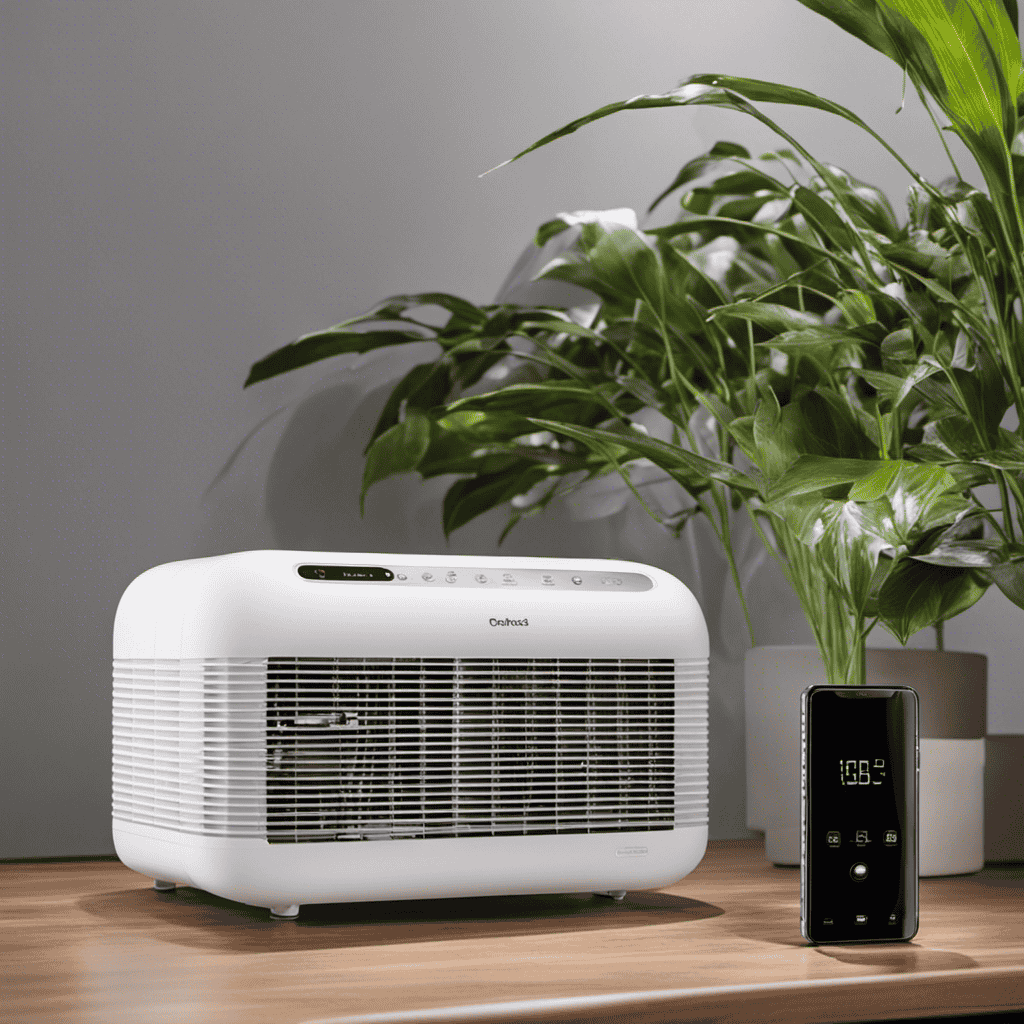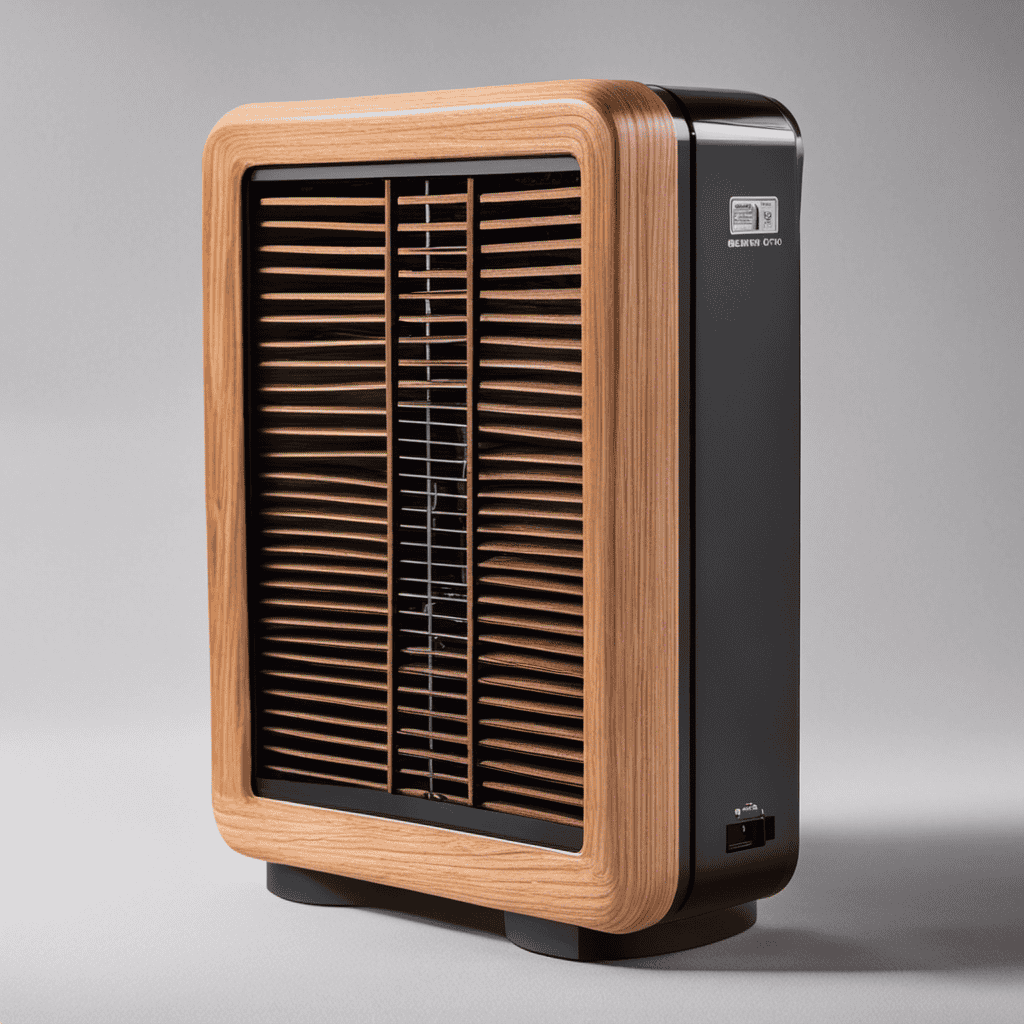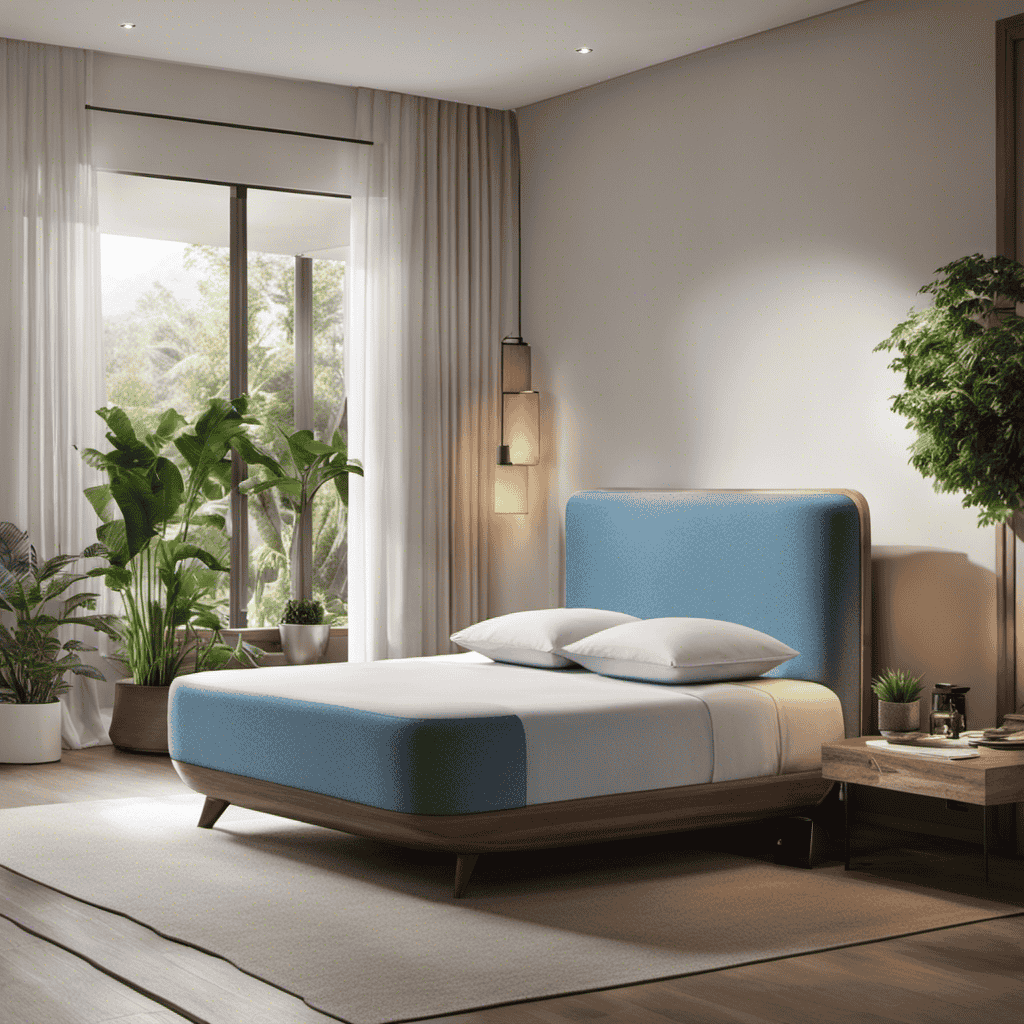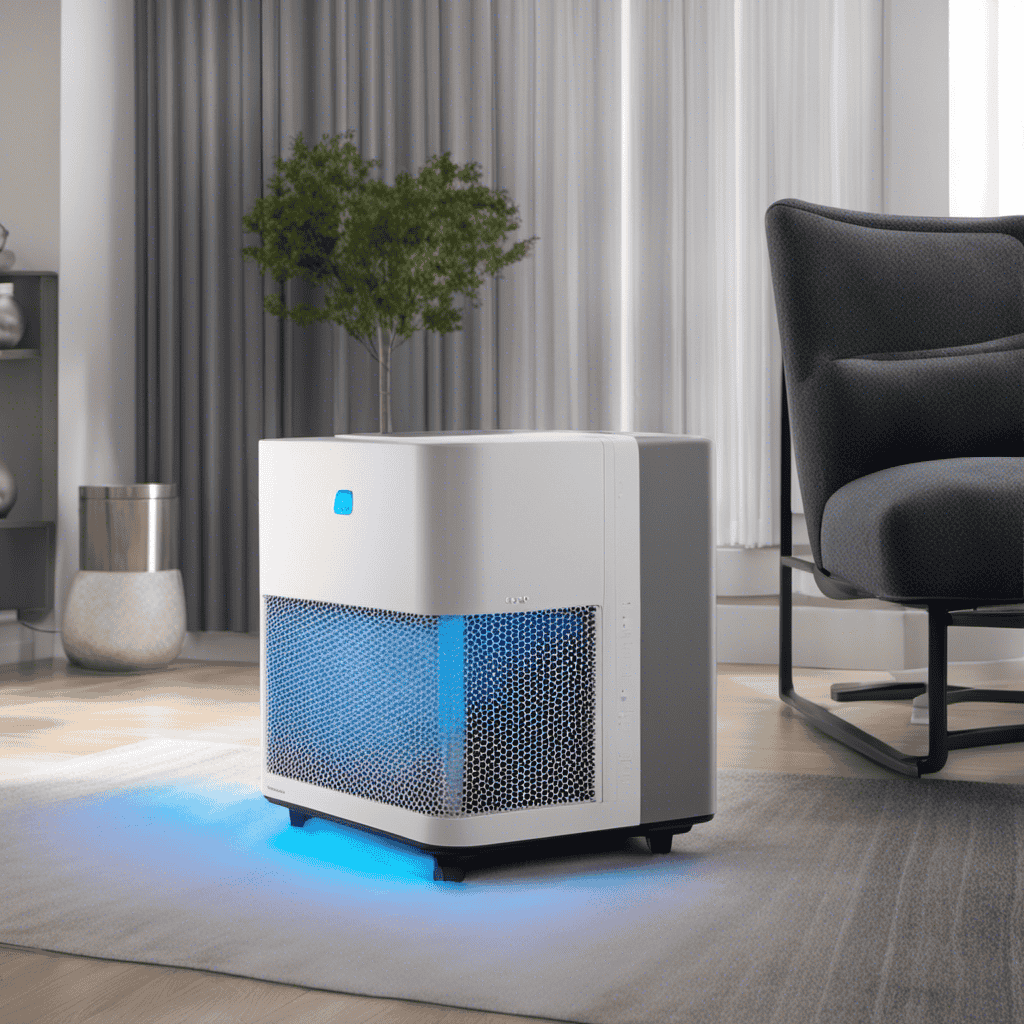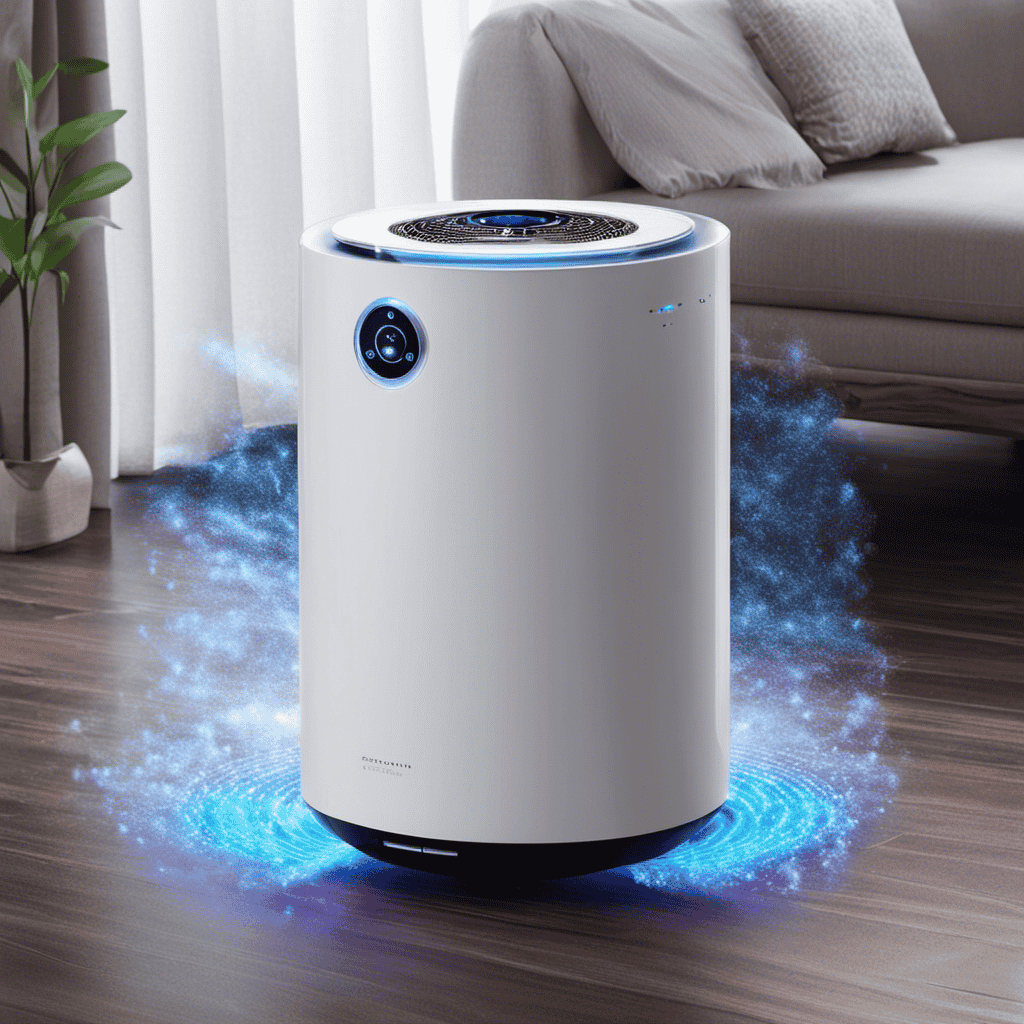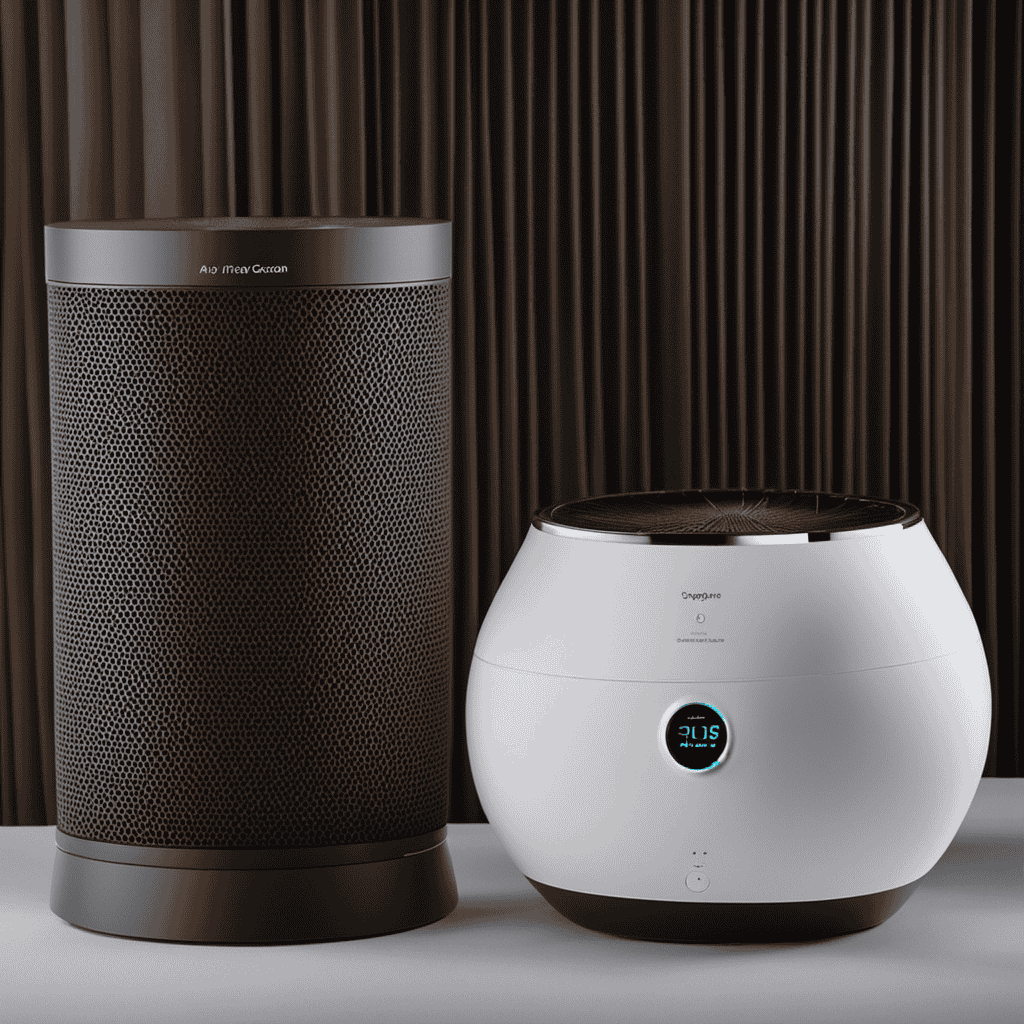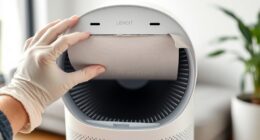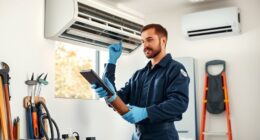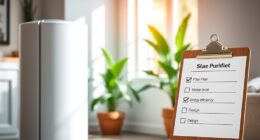I’ve often pondered, ‘What function does an ionizer serve in an air purifier?’ Allow me to explain.
Ionization technology, found in many modern air purifiers, plays a crucial role in removing airborne particles from our indoor environment. By releasing negatively charged ions, these ionizers attract and neutralize harmful pollutants, such as dust, pollen, and pet dander.
In this article, we’ll delve into the science behind ionizers, explore their benefits, and discuss potential drawbacks to help you make an informed decision when choosing an air purifier.
Key Takeaways
- Ionizers release negatively charged ions into the air.
- Negatively charged ions attach themselves to airborne particles.
- The attachment of ions to particles makes them heavy.
- Heavy particles are less likely to remain suspended in the air.
Understanding Ionization Technology
You might be wondering how an ionizer works in an air purifier. Well, let me explain.
An ionizer utilizes the ionization process to improve the air quality in a room. It works by emitting negative ions into the air. These negatively charged ions attach themselves to airborne particles, such as dust, pollen, and bacteria. Once attached, the particles become heavy and are less likely to remain suspended in the air. This process is known as ionization.
By introducing negative ions into the environment, an ionizer effectively reduces the concentration of harmful pollutants in the air. This technology is particularly useful for people with allergies or respiratory issues, as it helps remove allergens and irritants from the air.
Now that you understand how ionizers work, let’s delve into how they actually remove airborne particles.
How Ionizers Remove Airborne Particles
One way ionizers remove airborne particles is by attracting and neutralizing them with negatively charged ions. Negative ions are molecules that have gained an electron, giving them a negative charge. When released into the air, these ions attach themselves to airborne particles such as dust, pollen, and pet dander.
This process is known as ionization. Once the particles become negatively charged, they are attracted to positively charged surfaces, such as walls or furniture, or they may clump together and become too heavy to remain suspended in the air. In this way, ionizers effectively remove these particles from the air, improving air quality and reducing the potential for respiratory issues.
Now, let’s delve deeper into the role of ionizers in the air purification process.
The Role of Ionizers in Air Purification
When using an ionizer, it’s important to understand their role in improving overall air quality. Ionizers work by releasing negatively charged ions into the air, which attach to harmful particles such as dust, pollen, and smoke. These particles then become positively charged and are attracted to surfaces like walls and furniture, making them easier to remove through regular cleaning.
The benefits of ionizers include their ability to effectively remove airborne particles, reducing the presence of allergens and pollutants in the air. However, it’s essential to consider the drawbacks as well. Ionizers can produce ozone as a byproduct, which can be harmful to human health, particularly for individuals with respiratory conditions. It’s crucial to choose an ionizer that meets safety standards and has low ozone emissions.
Additionally, ionizers may not be as effective in removing larger particles or odors from the air.
Benefits of Using an Ionizer in an Air Purifier
When it comes to improving air quality and reducing airborne pollutants, using an ionizer in an air purifier can be highly effective.
Ionizers work by releasing negatively charged ions into the air, which attach to and neutralize harmful particles like dust, pollen, and smoke.
These charged ions cause the pollutants to become heavy and fall out of the air, resulting in cleaner and healthier indoor environments.
Improved Air Quality
Using an ionizer in an air purifier can greatly enhance air quality. An ionizer works by releasing negative ions into the air, which attach to airborne contaminants and cause them to become heavy, eventually falling to the ground or getting trapped in the air purifier’s filters. This process effectively reduces the number of pollutants circulating in the air, resulting in cleaner and healthier indoor environments.
Studies have shown that ionizers can effectively remove a wide range of airborne contaminants, including dust, pollen, pet dander, mold spores, and even certain bacteria and viruses. This can lead to significant health benefits, especially for individuals with respiratory conditions such as asthma or allergies. By reducing exposure to these harmful particles, using an ionizer in an air purifier can contribute to improved respiratory health and overall well-being.
Reduced Airborne Pollutants
An ionizer significantly enhances air quality by reducing the number of pollutants in the air. It is a key component of air purifiers that effectively removes harmful particles from the environment.
The ionizer works by emitting negatively charged ions into the air, which attach themselves to positively charged pollutants, such as dust, smoke, and pollen. This process causes the pollutants to become heavy and fall to the ground or attach to nearby surfaces, preventing them from being inhaled.
The effectiveness of ionizers in reducing airborne pollutants has been extensively studied and proven. Research has shown that ionizers can lead to a significant reduction in allergies and respiratory symptoms, providing relief to individuals with sensitivities.
However, it is important to be aware of the potential drawbacks of ionizers in air purifiers. [Transition sentence to subsequent section: While ionizers offer numerous benefits, there are also some potential drawbacks to consider.]
Potential Drawbacks of Ionizers in Air Purifiers
One potential drawback of ionizers in air purifiers is that they may produce ozone, which can be harmful to human health in high concentrations. Ozone is a reactive gas that can irritate the respiratory system, trigger asthma attacks, and cause lung inflammation. When using an air purifier with an ionizer, it is important to be aware of the potential risks and health concerns associated with ozone production.
Here are five key points to consider:
- High levels of ozone can lead to respiratory issues and worsen existing lung conditions.
- Prolonged exposure to ozone can damage lung tissue and decrease lung function.
- Ozone can react with other indoor pollutants, forming harmful byproducts.
- Individuals with respiratory conditions, such as asthma or COPD, may be more sensitive to ozone.
- Ozone generators, often found in air purifiers, should be used with caution and according to manufacturer instructions to minimize potential health risks.
It is crucial to prioritize both air purification and human health when considering the use of ionizers in air purifiers.
Tips for Choosing an Air Purifier With Ionizer Technology
When considering an air purifier with ionizer technology, it is important to prioritize finding one that meets your specific needs and addresses your concerns about indoor air quality.
To ensure optimal performance and longevity of your air purifier, regular maintenance is crucial. It is recommended to follow the manufacturer’s guidelines for cleaning and replacing filters.
Additionally, pay attention to ionizer safety precautions. Ionizers produce ozone as a byproduct, which can be harmful in high concentrations. Look for air purifiers with built-in ozone sensors and adjustable ionizer settings to control ozone levels.
It is also important to keep the ionizer clean and free from dust buildup, as this can affect its effectiveness.
Frequently Asked Questions
Are Ionizers Safe to Use in Air Purifiers?
Ionizers in air purifiers have pros and cons. They can remove airborne particles, but they also produce ozone, which can be harmful in high concentrations. It’s important to consider potential risks before using an ionizer.
Can Ionizers Remove Odors From the Air?
Yes, ionizers can remove odors from the air. By releasing negatively charged ions, ionizers attract and neutralize positively charged particles, including odor-causing molecules. This helps improve indoor air quality.
Do Ionizers Produce Any Harmful By-Products?
Ions produced by ionizers can have harmful effects on human health. Certain ionizers can produce ozone, a known respiratory irritant. It is important to consider these health concerns when using such devices.
How Often Do Ionizers Need to Be Cleaned or Replaced?
To maintain an ionizer in an air purifier, it is important to clean or replace it regularly. Doing so ensures optimal performance and extends its lifespan. The benefits of an ionizer include removing airborne particles and improving indoor air quality.
Can Ionizers Effectively Remove Allergens From the Air?
Ionizers in air purifiers effectively reduce air pollution by removing allergens. They have potential health benefits such as reducing asthma symptoms and improving indoor air quality. Studies show their efficacy in reducing airborne particles.
How does the Ionizer Function in an Air Purifier Compared to a Regular Air Purifier?
When considering air purifier vs ionizer, it’s important to note that a regular air purifier uses filters to trap and remove particles from the air. On the other hand, an ionizer emits negatively charged ions that attach to airborne particles, causing them to fall to the ground.
Conclusion
In conclusion, the ionizer in an air purifier is a powerful tool for removing airborne particles and improving indoor air quality. By emitting negatively charged ions, it attracts and attaches to positively charged particles, such as dust, pollen, and smoke, making them heavy enough to fall or be easily captured by filters.
While ionizers can be effective in purifying the air, it’s important to note that they also produce ozone as a byproduct, which can be harmful in high concentrations. Therefore, when choosing an air purifier with ionizer technology, it’s crucial to consider the ozone emission levels and opt for a device that meets safety standards.
